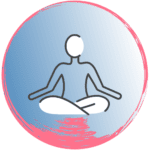
The skeletal system is not just a framework that gives our body shape—it’s a complex, living system that performs crucial functions for our survival and movement. As yoga teachers, understanding the skeletal system helps us guide our students safely while appreciating the incredible architecture of the human body.
The skeleton provides the fundamental framework for our body, creating a rigid structure that maintains our shape and supports our weight against gravity. This is especially important in weight-bearing yoga poses.
Bones form protective cages around vital organs: the skull protects the brain, the rib cage shields the heart and lungs, and the vertebrae guard the spinal cord.
Red bone marrow, found within certain bones, is responsible for producing red blood cells, white blood cells, and platelets—a process called hematopoiesis.
Bones store essential minerals, particularly calcium and phosphorus, releasing them into the bloodstream when needed to maintain proper mineral balance.
Bones produce hormones like osteocalcin, which helps regulate bone formation and plays a role in energy metabolism.
Examples: Humerus (upper arm), Femur (thigh)
Characteristics: Longer than they are wide, typically found in limbs, contain mostly compact bone with marrow cavities
Examples: Carpal bones (wrist), Tarsal bones (ankle)
Characteristics: Cube-shaped, provide stability and some movement
Examples: Scapula (shoulder blade), Ribs, Cranial bones
Characteristics: Thin and flat, provide protection and broad surfaces for muscle attachment
Examples: Vertebrae, Facial bones
Characteristics: Complex shapes, protect vital organs and provide specialized functions
| Region | Key Bones | Yoga Considerations |
|---|---|---|
| Spine | – Cervical (C1-C7) – Thoracic (T1-T12) – Lumbar (L1-L5) – Sacrum |
Critical for alignment in all poses. Pay special attention to junctions between regions, as these are common areas for injury. |
| Shoulder Girdle | – Clavicle (collarbone) – Scapula – Humerus |
Important for weight-bearing poses like Downward Dog and arm balances. Watch for proper alignment in Chaturanga. |
| Pelvic Girdle | – Ilium – Ischium – Pubis |
Crucial for seated poses and hip openers. The sits bones (ischial tuberosities) are key reference points. |
Understanding the skeletal system helps you:
The glenohumeral joint (ball-and-socket) works with the AC joint (acromioclavicular) and scapulothoracic joint. Understanding this complex helps in safely teaching arm balances and inversions.
The sacroiliac joint connects the sacrum to the ilium. Limited movement here is normal, but excessive movement can cause pain. This affects many seated poses and forward folds.
The patella (kneecap) is a sesamoid bone that helps with knee extension. Proper alignment of the knee joint is crucial in standing poses and transitions.